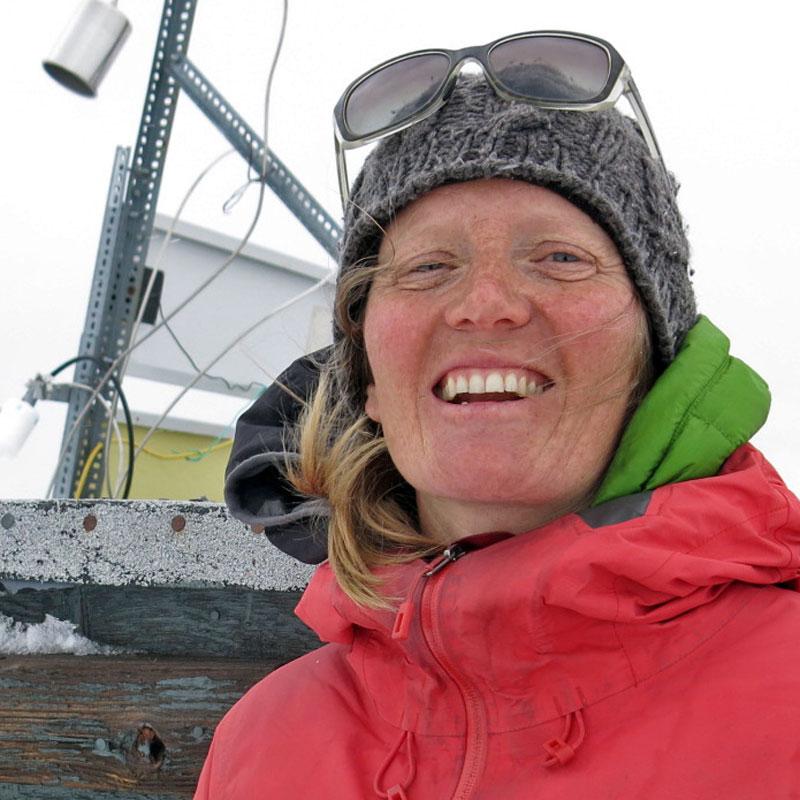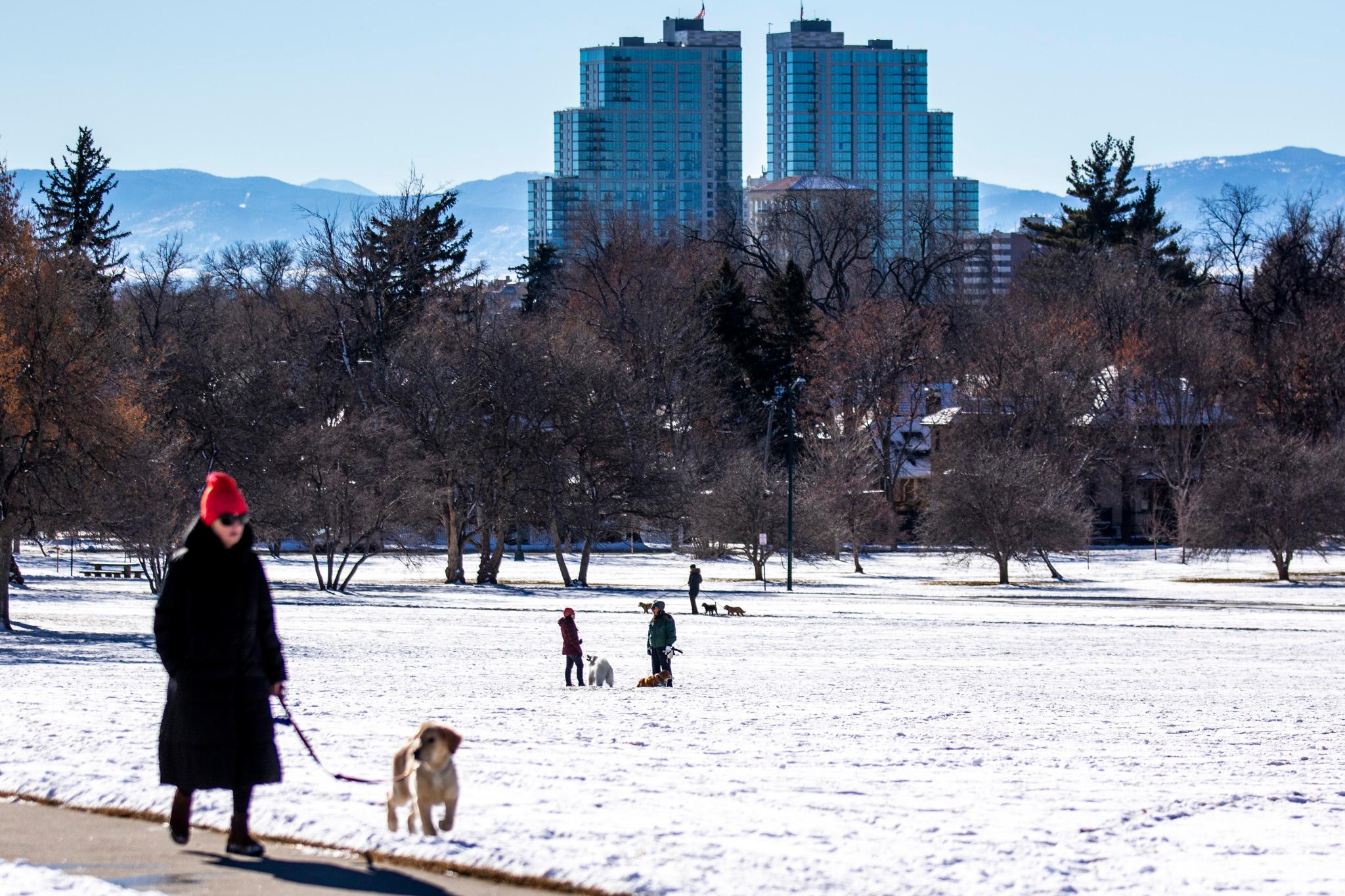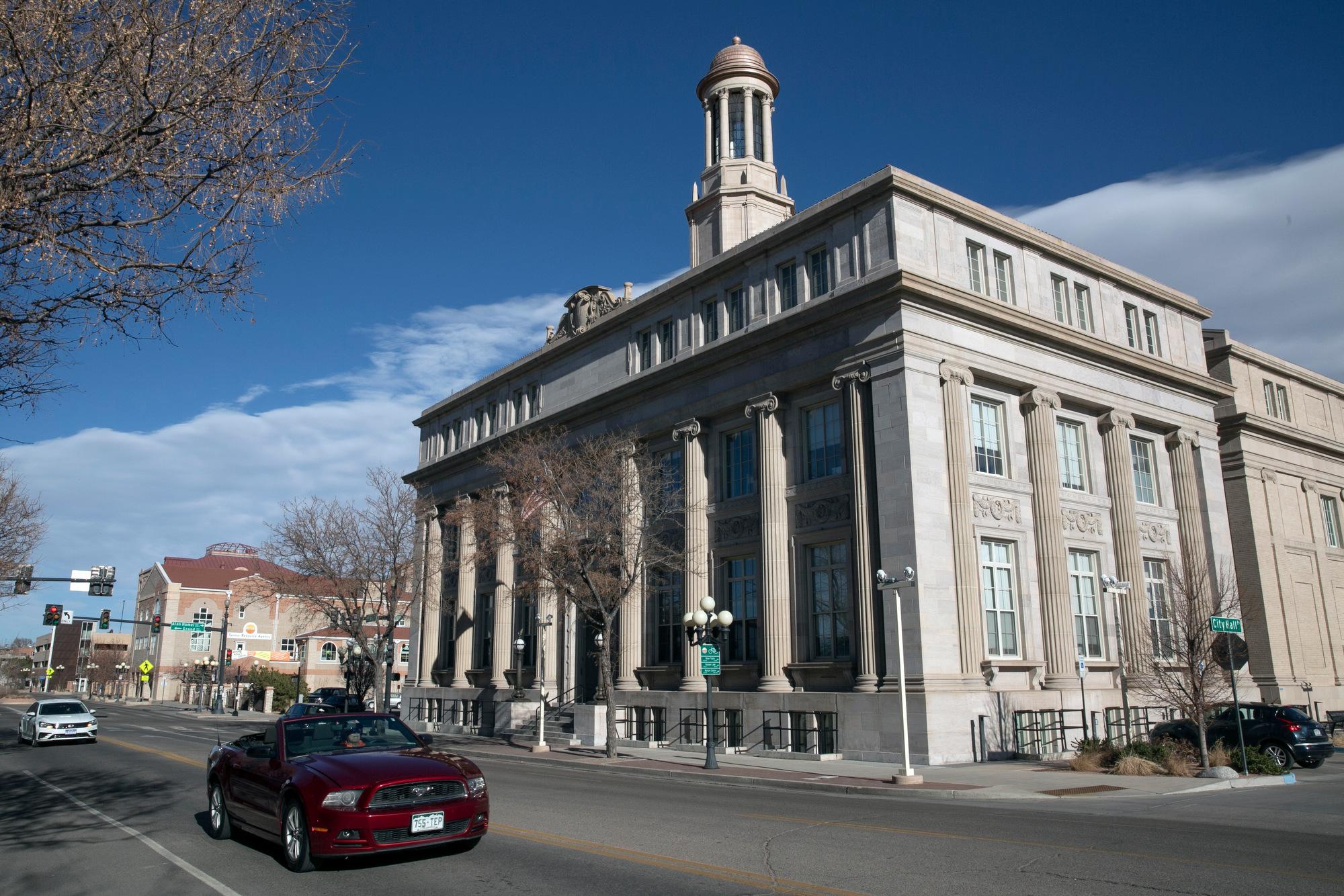
For decades, the National Oceanic and Atmospheric Administration has depended on a small but dedicated group of people to collect carbon dioxide data.
Long-term CO2 data is the scientific backbone for international climate change research. Global air monitoring has become a steady drumbeat in a world where federal policy in the Trump administration can shift as quickly as the wind.
NOAA pulls samples from about 100 sites around the world and Colorado’s contribution to the effort is the Niwot Ridge Long Term Ecological Research site, found in the mountains about 21-miles west of Boulder. The weekly sample collection at 11,500 feet is surprisingly low-tech.

“Any day up on top of the mountain is better than a day at your desk. Even if you can’t feel your fingers,” said climatologist Jen Morse, as she strides over the icy tundra of Niwot Ridge in 30 mile per hour winds.
“We know that CO2 is going up because of sites like this,” Morse said. “And there’s sites like this all over the world.”
Carbon dioxide varied at levels below 280 parts per million for hundreds of thousands of years. But that number began to rise with the industrial revolution. In 2016, the global average was above 402 parts per million. It’s the direct result of burning fossil fuels like coal and natural gas into the atmosphere. All those heat trapping gasses are making the planet warmer. Colorado's temperatures on the Front Range have already increased 2 degrees between 1977 and 2006. Three out of five hottest years on record are between 2012 and 2016.
The test site on Niwot Ridge is a small shack the size of a one-car garage. Inside, Morse pulls two glass flasks from the wall and attaches them to a special air intake machine.

“This is kind of the magic. These guys,” Morse said of the fragile pair of bottles. Having two is important because scientists need to monitor samples for variability. They watch those numbers closely.
Morse writes down when the sample was taken. And other facts like wind speed and temperature.
“And then we have our sample. And the only thing we have to do is not fall and break it as we ski back down.”
NOAA depends on paid workers like Morse (her job is the result of a partnership between the University of Colorado Boulder and NOAA) and volunteers to gather carbon dioxide data for its Boulder-based Global Monitoring Division. For years, NOAA has kept a lean budget by nourishing partnerships with places like CU. In fact, it’s the university that manages the Niwot Ridge research station.
President Donald Trump has proposed a dramatic 22 percent cut to the NOAA budget. If realized, it would impact universities like CU and research initiatives like the Institute of Arctic and Alpine Research.
“Most of us never thought we would see a time when basic monitoring would be something that could be on the table in terms of cuts,” said Jim White, the director of INSTAAR.
White said their role is to find out how much CO2 and methane are in the atmosphere — and describe the changes. Between White and the head of NOAA's Global Monitoring Division, both have said their budgets have been on a diet for years. Millions in cuts could mean taking away measurements, or firing workers.
“If we take a big cut, it’s people. People have to go, and those are the tough ones,” said Jim Butler, director of NOAA’s Global Monitoring Division. “This organization is like a family.”

One of those family members, and a steady presence at NOAA’s Boulder processing lab for CO2 samples, is physical scientist Pat Lang.
She’s been doing this work for three decades. As a carousel feeds glass bottle air samples through the infrared test machine Lang points out that the samples are “from Mongolia, Argentina and Alaska. They come from all around the world.”
The Niwot Ridge samples Jen Morse took amount to about 410 ppm. The values are preliminary until quality control steps are complete. Another NOAA department dedicates effort to ensure samples taken across the world are taken according to the same standards.
NOAA’s Carbon Cycle Research Group in Boulder has its finger on the pulse of carbon dioxide emissions across the world. Pieter Tans, the group’s director, said the bottom line is that “collectively we humans are overwhelming natural systems.”
“This is risky business,” he said.
Right now half of carbon emissions are absorbed by land vegetation and the ocean, Tans said. The other half is accumulating in the atmosphere. He doesn’t know how long that will continue. Tans’ sense of urgency was reflected in the Paris Climate Accord.
“They have to go to zero these emissions. We have to fully decarbonize our energy system,” he said. “Now you can say, ‘wow that’s a lot of money. That’s going to be expensive.’ No, actually it’s a great thing. Because you’re talking about a lot of jobs.”
President Donald Trump sees a different picture. He stated that the Paris agreement would have cost the United States millions of jobs.
"This includes 440,000 fewer manufacturing jobs. Not what we need. Believe me, this is not what we need,” the president said from the White House Rose Garden, announcing his plan to pull out of the accord.
Environmental groups dispute Trump's numbers.
The president largely framed his remarks in economic terms. More difficult to pin down are his current views on climate change. In 2012, Trump tweeted that global warming was a concept created by the Chinese to damage U.S. manufacturing. But after the election in 2016, he softened that view, saying there's connectivity between human activities and climate change.

Recent events have been a lot to take in for Jen Morse. Up on Niwot Ridge, the barren landscape above treeline is as remote as it gets from Washington D.C.
“Basically, we’re talking about physics. He’s almost saying ‘I don’t believe in physics,’” Morse said.
People accept the facts behind how cars and TVs work every day. So why are they reluctant to accept the explanation of what happens when large amounts of carbon dioxide are pumped into the atmosphere?
“If we just have someone in office that wants to say whatever he wants to say for four years, it’s not great. But it’s not going to change the view what I do or the way I view the science,” said Morse.
The fruits of her labor will populate just one week out of 52 in 2017 for NOAA’s Niwot Ridge monitoring station. When the next week rolls around, she’ll trek back up the mountain to do it all over again.
This is part of a series of stories about people who stand to be most affected, either positively or negatively, by new Trump administration policies. Have a story to tell? Comment below, follow us on Facebook, Twitter and Instagram, or reach us via our Connect page. We’re listening.









